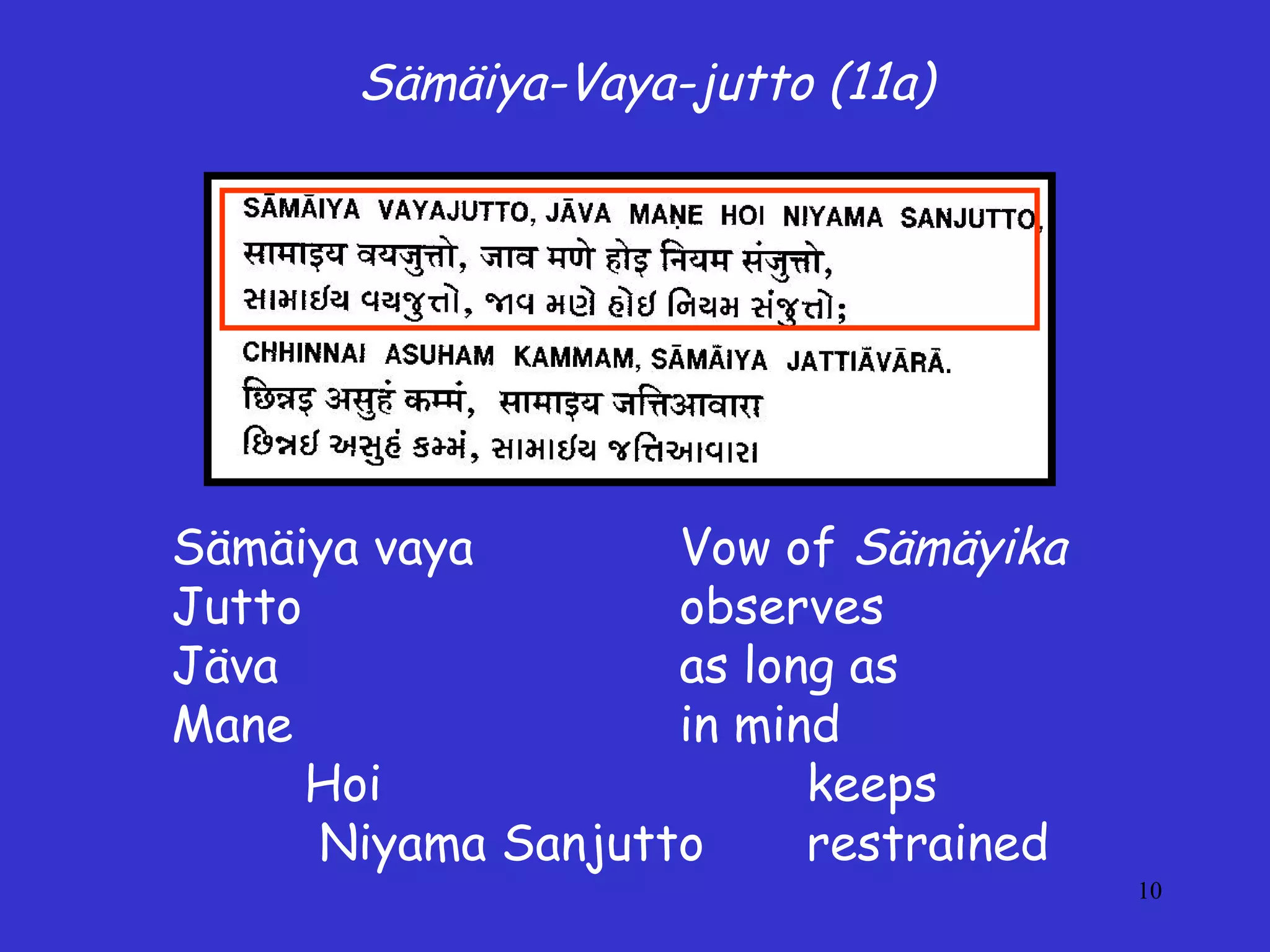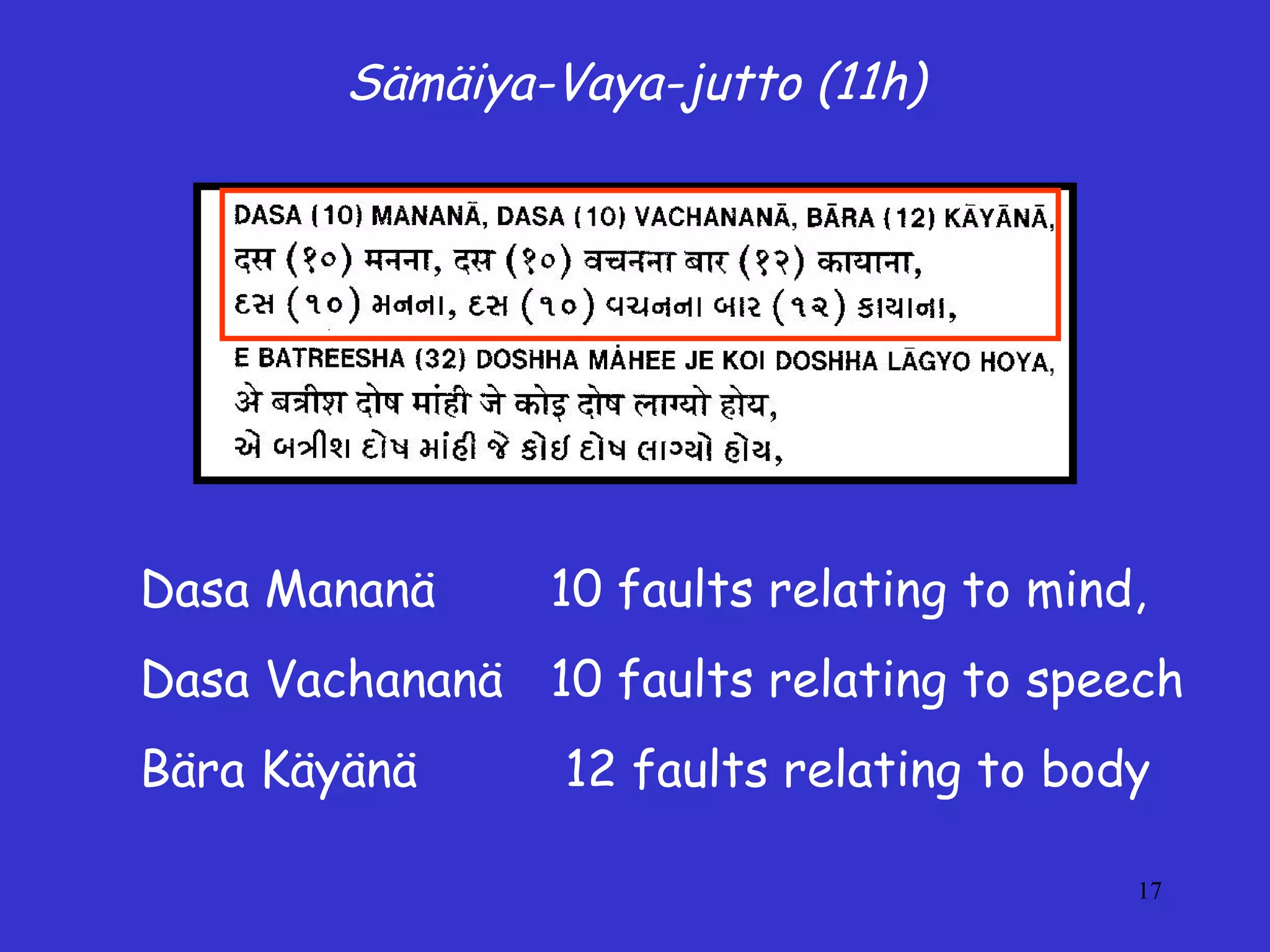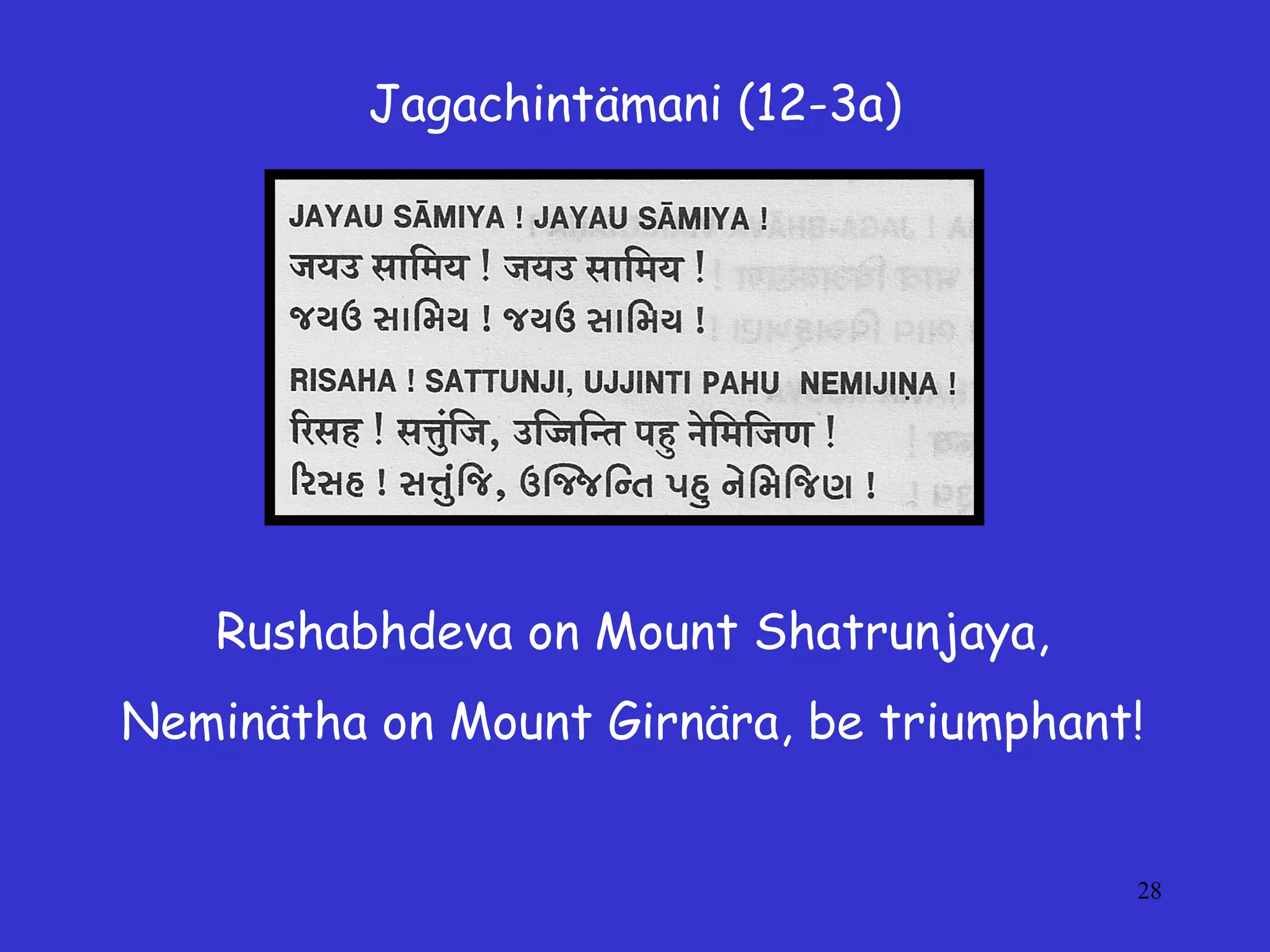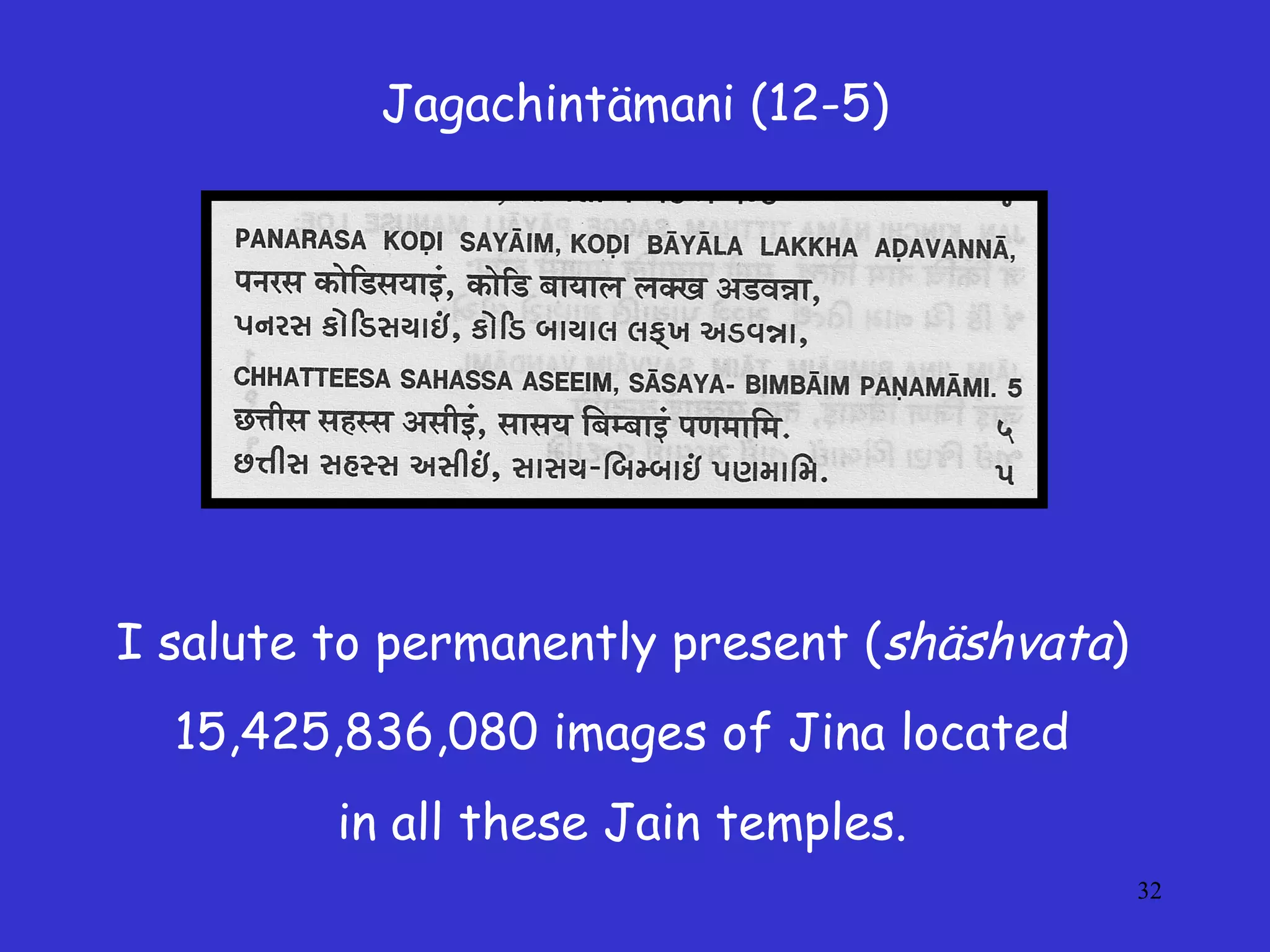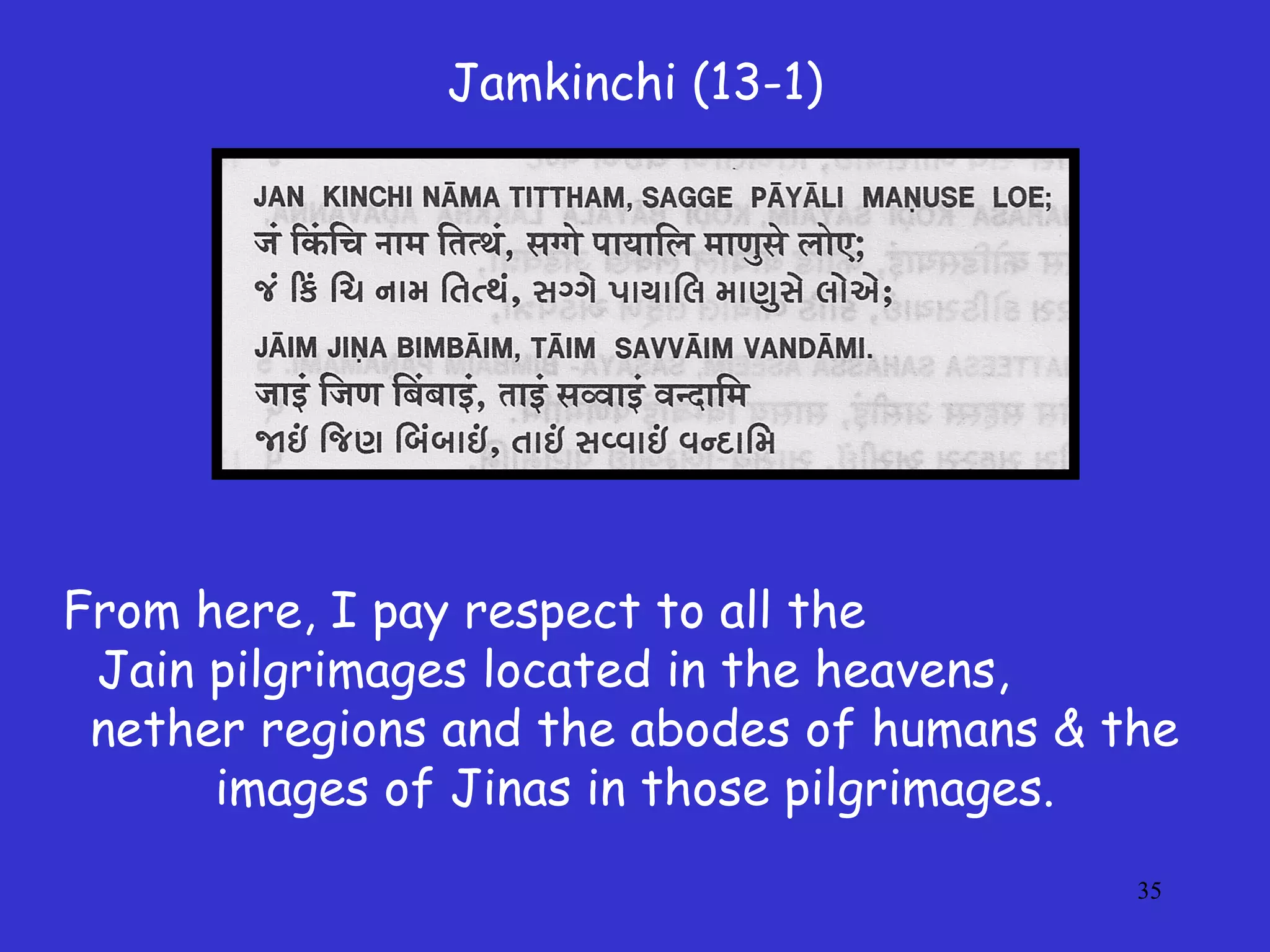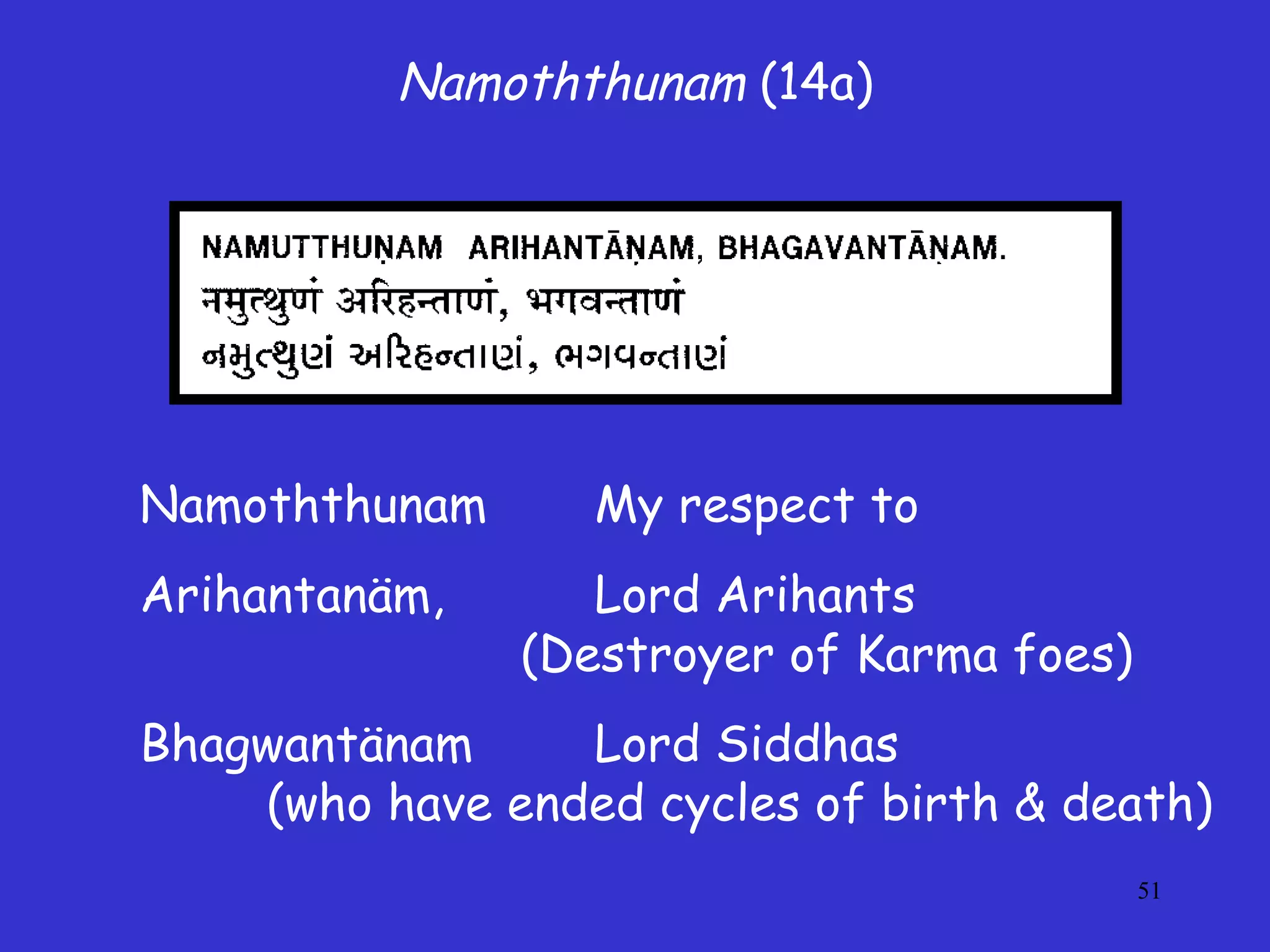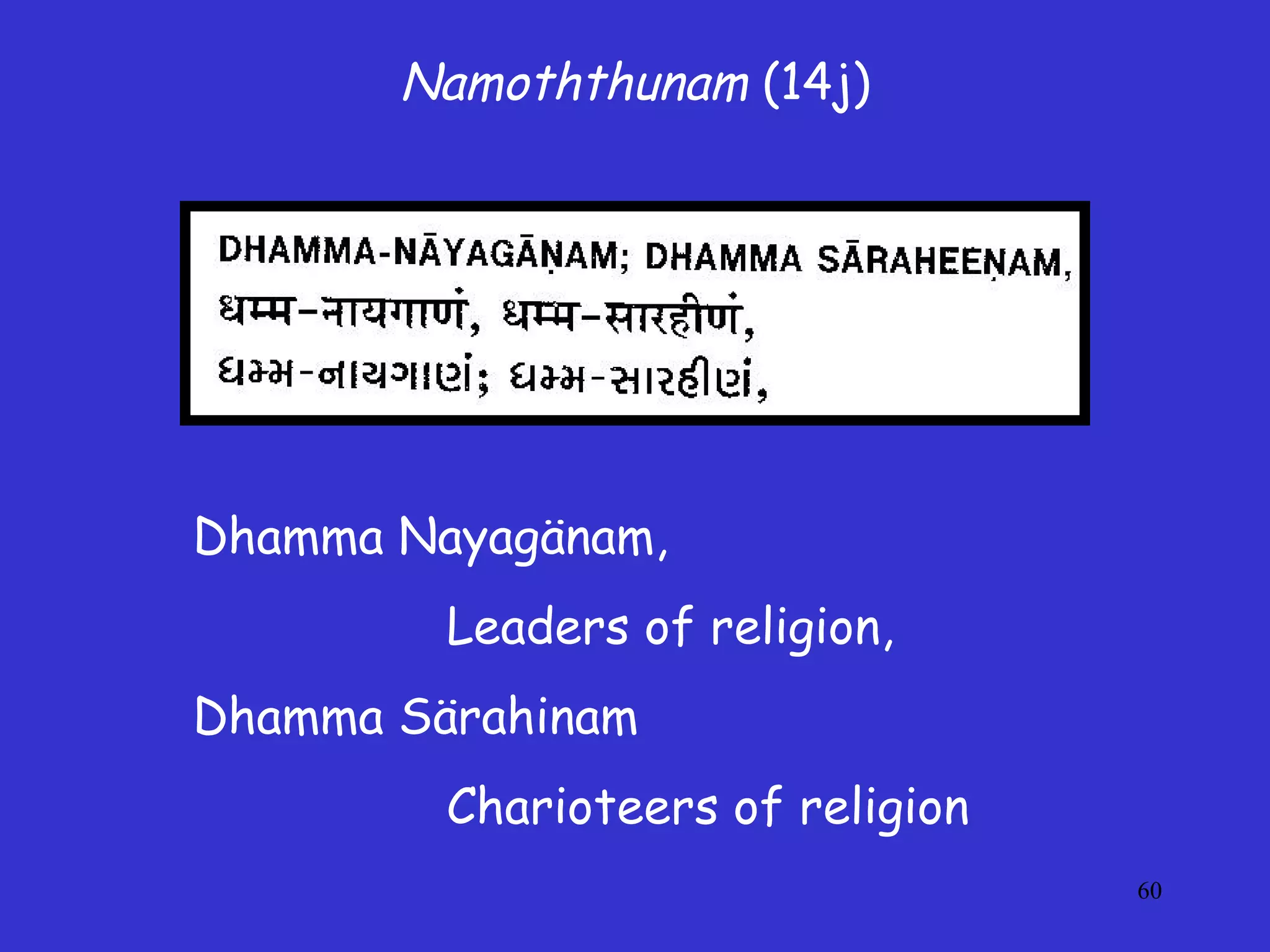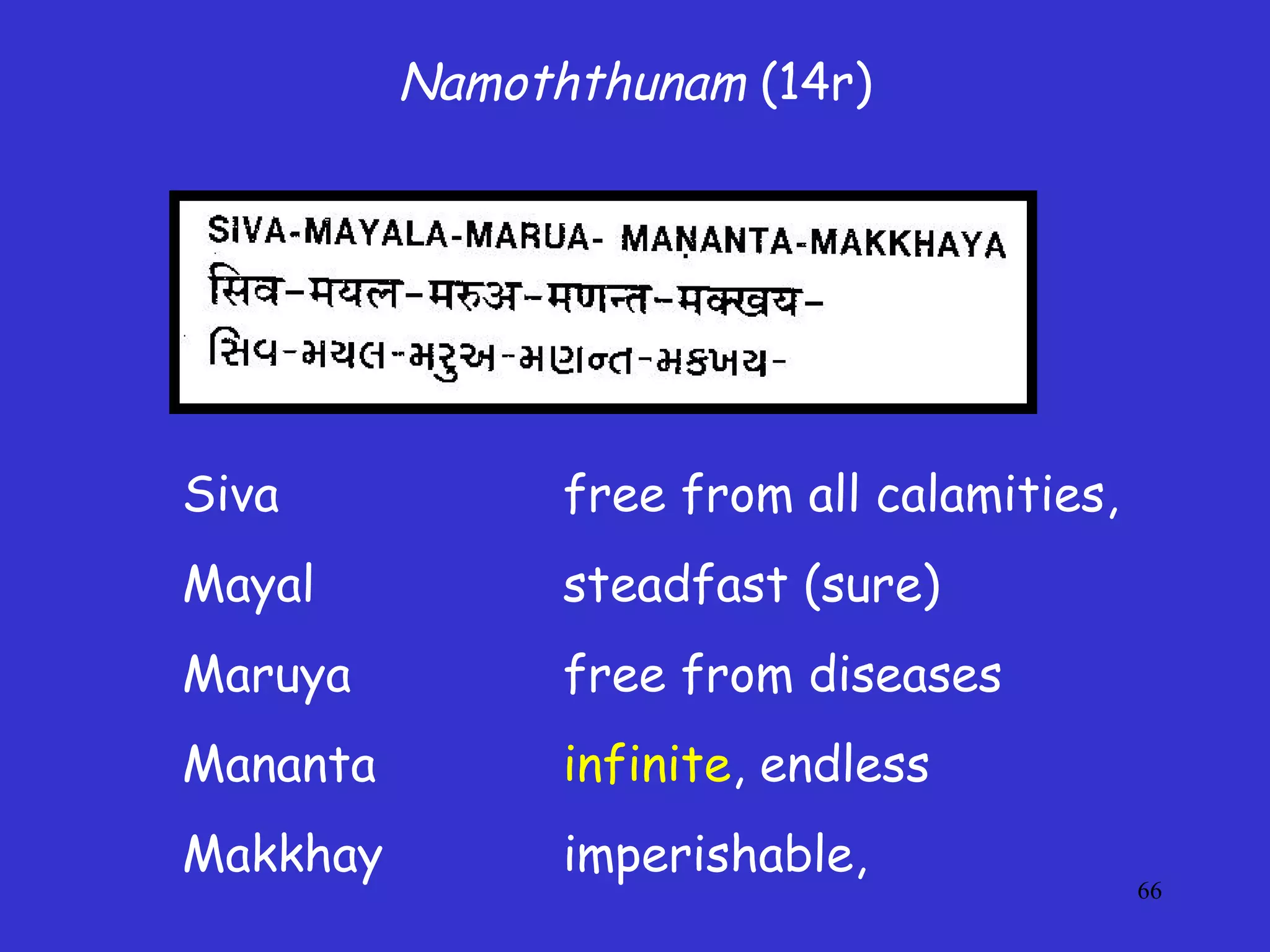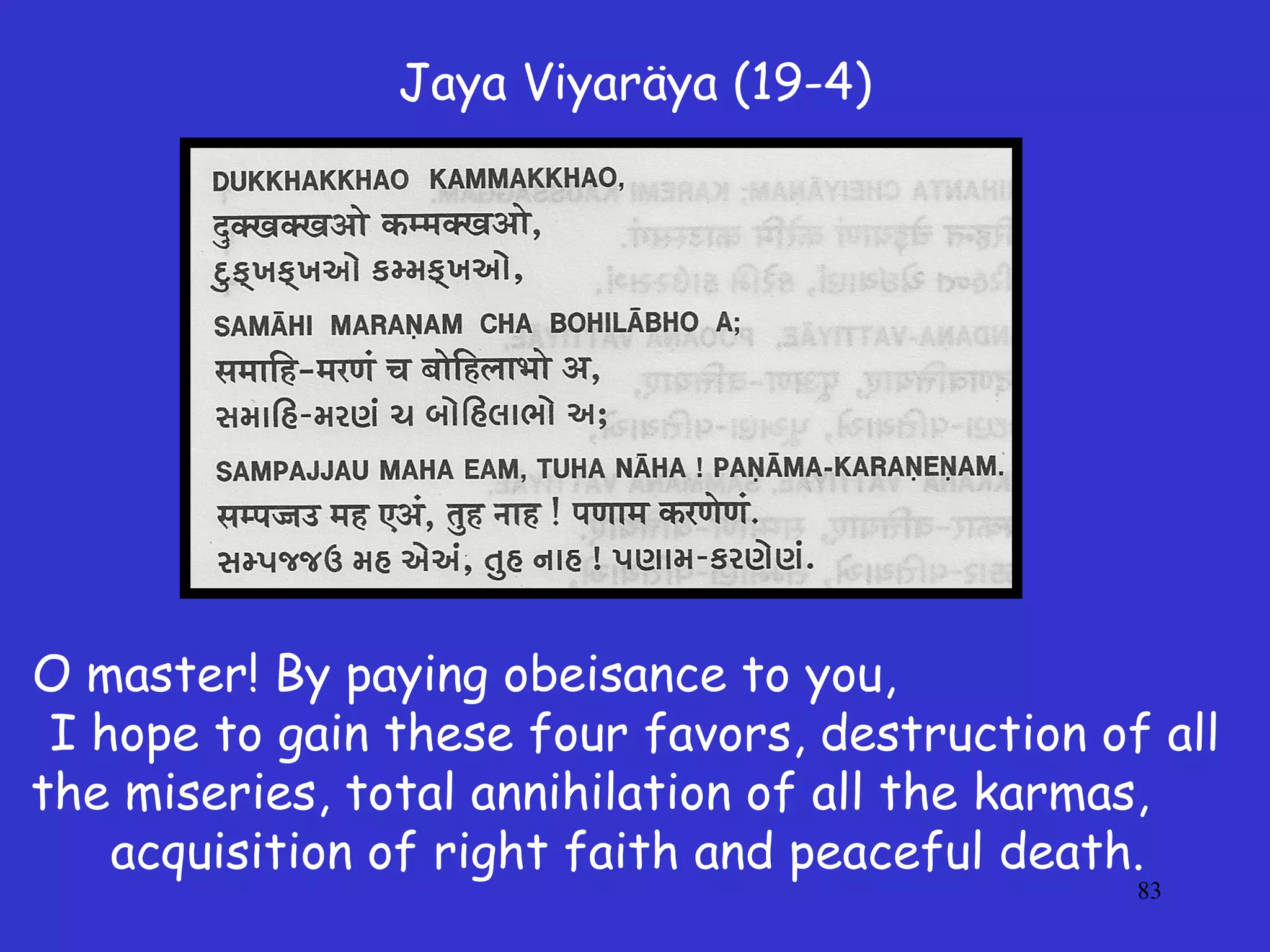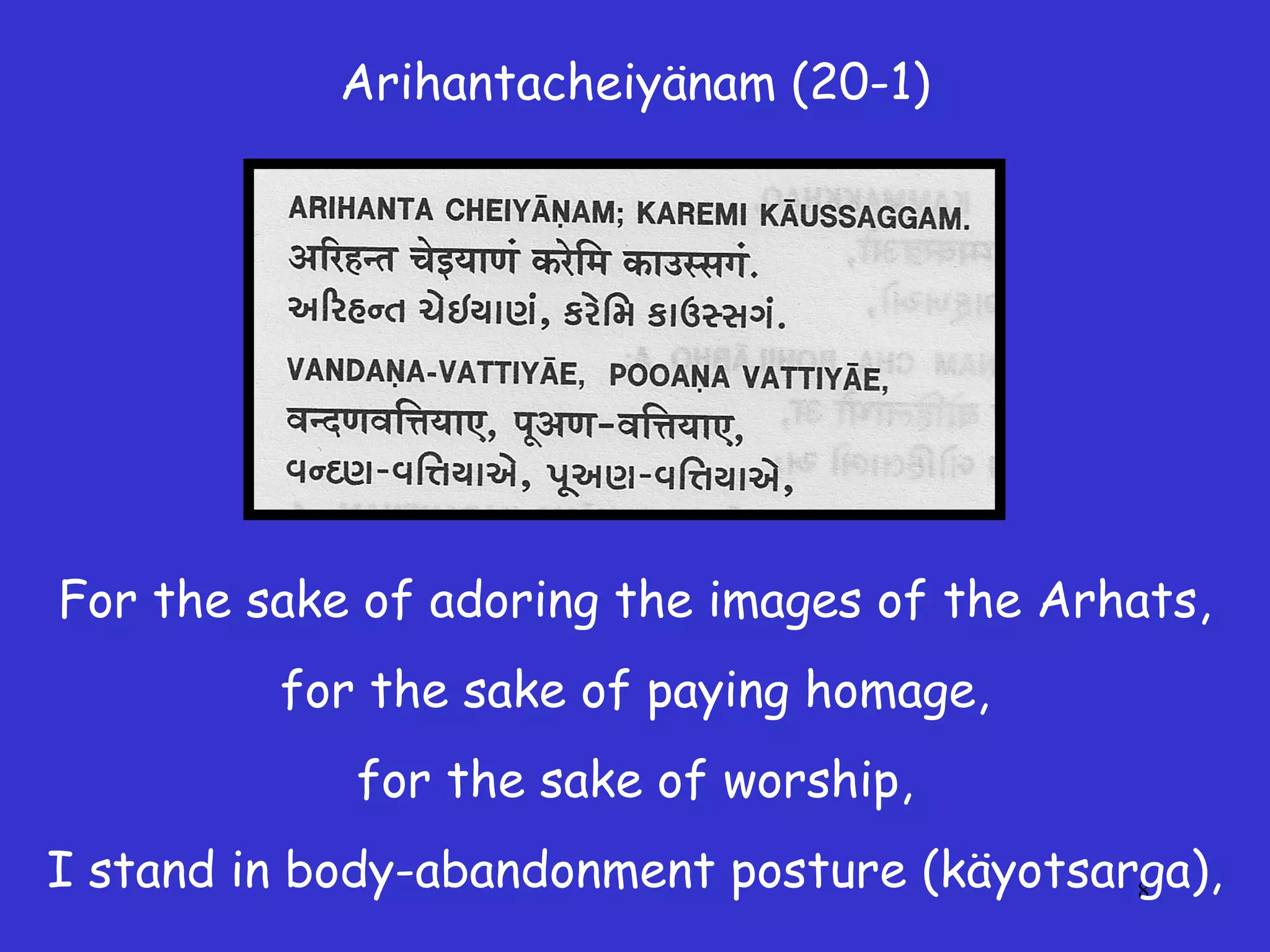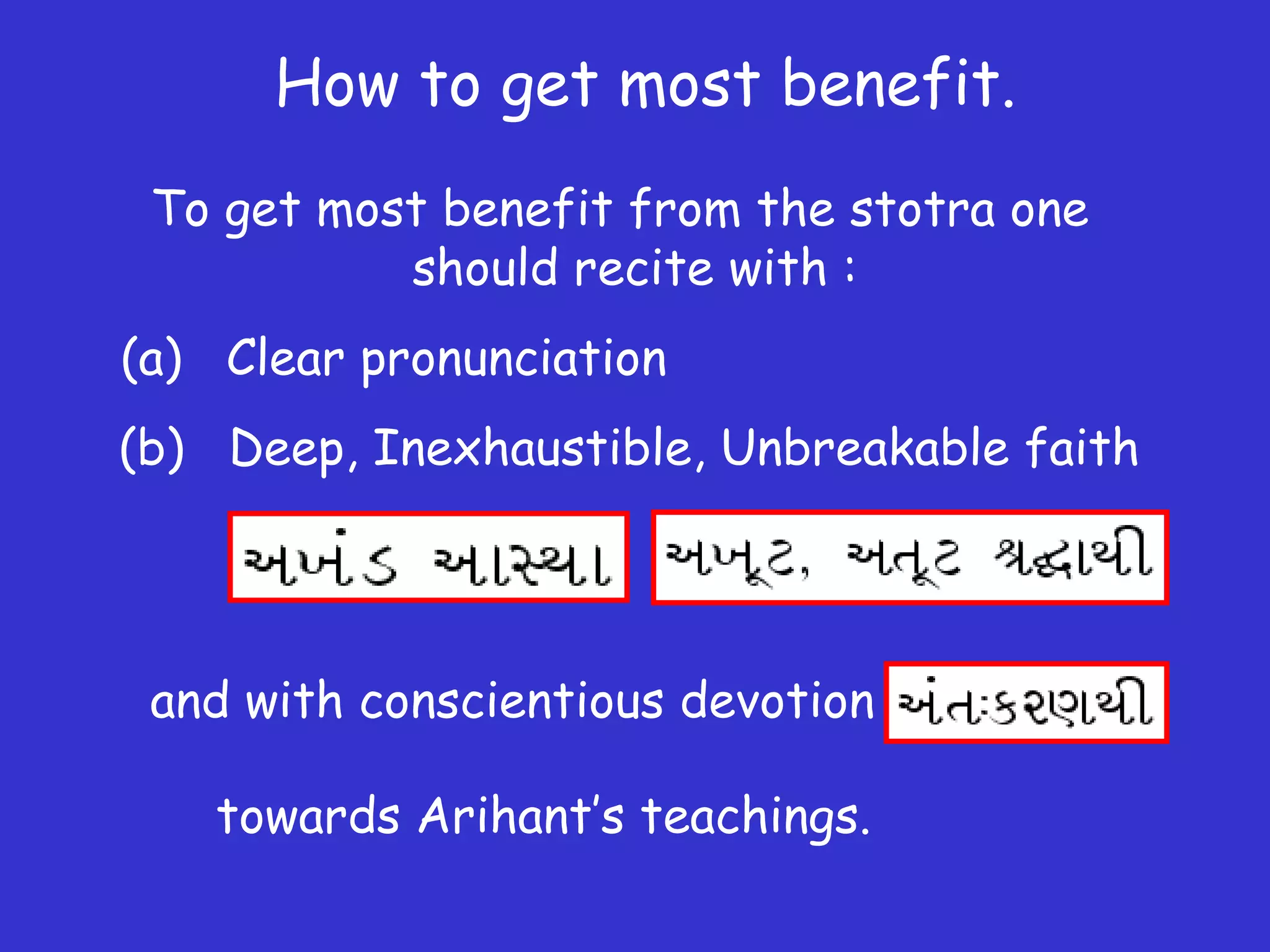The document provides an interpretation and explanation of various pratikramana sutras, highlighting their purposes and significance in Jainism. It includes detailed descriptions of individual sutras, such as the sämäiya-vaya-jutto, jagachintämani, and namoththunam, emphasizing themes of forgiveness, respect for tirthankaras, and the role of aspirants in overcoming karma. Additionally, it outlines the virtues of siddhas and arihants, praising their qualities and the importance of aligning with their teachings for spiritual progress.









